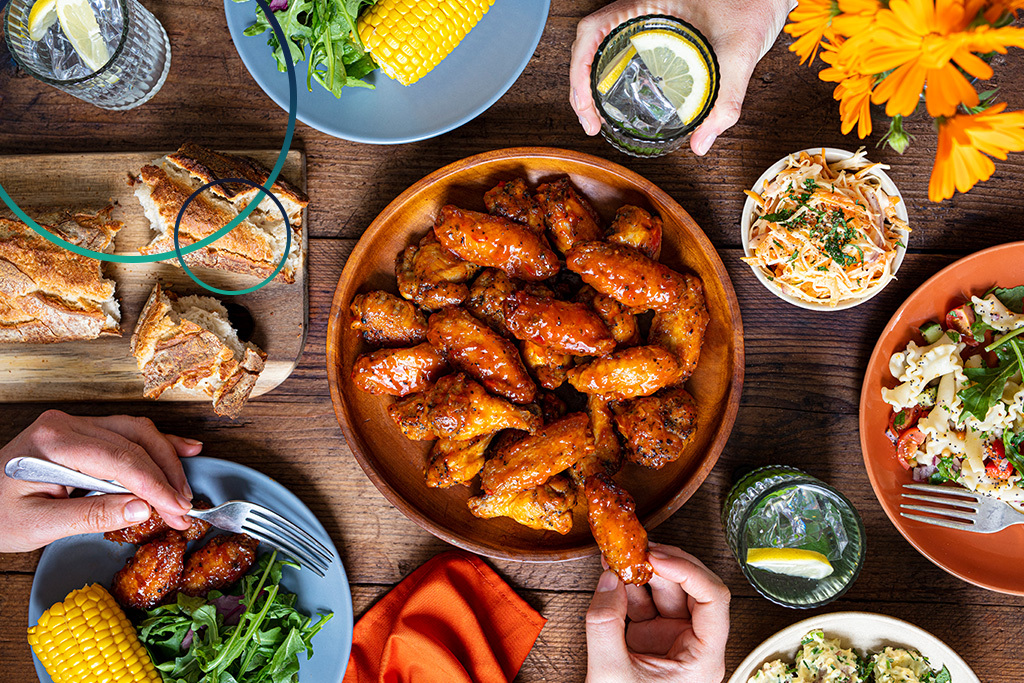Tube Ninja Insights
Your go-to source for the latest trends and tips in video content creation.
Snap, Savor, Share: Crafting Edible Imagery That Wows
Transform your food photos into mouthwatering masterpieces! Discover tips to snap, savor, and share edible imagery that wows.
5 Tips for Capturing Stunning Food Photos
Capturing stunning food photos requires both an artistic eye and a few practical skills. Lighting is one of the most critical factors that can make or break your food photography. Always try to shoot in natural light, preferably near a window. This enhances the colors and textures of your dishes, making them visually appealing. To further improve your images, use a white reflector or a piece of white cardboard to bounce light back onto the subject, which can beautifully soften shadows.
Another essential tip is to pay close attention to composition. The way you arrange your food can dramatically impact the overall look of your photo. Consider using the Rule of Thirds; divide your image into thirds—both horizontally and vertically—and position your main subject at the intersections. Additionally, don’t forget to include elements like utensils, napkins, or ingredients surrounding your dish to create a complete story, enhancing the viewer's experience.

The Art of Food Styling: Making Every Dish Picture-Perfect
The art of food styling is a delicate balance between aesthetics and taste that can transform any ordinary dish into a visual feast. By carefully selecting the right tableware, garnishes, and presentation techniques, you can create dishes that not only tantalize the taste buds but also captivate the eyes. Consider using a variety of textures and colors to enhance the overall appeal; for example, pairing vibrant vegetables with a creamy sauce can create a stunning contrast that draws attention. Additionally, lighting plays a crucial role in food photography, so ensure your dishes are well-lit to highlight their best features.
To master food styling, keep these essential tips in mind:
- Choose the right plate: A neutral or contrasting plate can elevate your dish.
- Use garnishes wisely: Fresh herbs or edible flowers can add a touch of elegance.
- Think about composition: Use the rule of thirds for a balanced and pleasing layout.
- Keep it simple: Avoid overcrowding the plate to let each element shine.
How to Create Engaging Food Content That Tells a Story
Creating engaging food content that resonates with your audience involves more than just listing recipes or food reviews; it’s about weaving a narrative that captivates and connects. Start by identifying the story behind each dish or ingredient. Consider its origins, the cultural significance, or even a personal anecdote related to the food. This storytelling approach can make your content more relatable and memorable. For example, if you're writing about a traditional Italian pasta dish, you might include a brief history of how it was passed down through generations in your family, complete with sensory details that evoke the smells and sights of the kitchen.
Incorporate elements such as vivid imagery and emotional language to enhance the appeal of your food narratives. Utilize descriptive adjectives that paint a picture in the reader’s mind, making them crave the flavors you describe. You can also employ various formats like videos, infographics, or social media snippets to reach a broader audience and keep them engaged. Don’t hesitate to ask your readers questions or encourage them to share their own stories in the comments. This interaction not only enriches the content but also fosters a community of food lovers who share your passion.